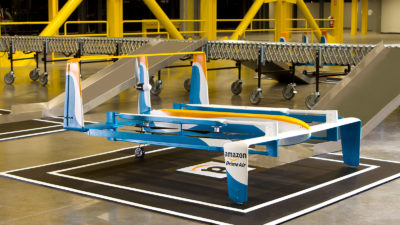Big strides in air control
By Lesley Weitz, Uday Shankar, and John Reed|December 2016
The Guidance, Navigation and Control Technical Committee advances techniques, devices and systems for guiding and commanding flight vehicles.
Throughout 2016, the FAA continued its deployment of a new air-traffic-control ground automation capability, called Ground-based Interval Management Spacing, to assist controllers in sequencing and scheduling aircraft into terminal radar control areas during busy traffic periods. This capability leverages automation functions that predict aircraft trajectories to merge points in the airspace and schedules times to cross those points. Once a flight’s schedule at downstream points is determined, the air traffic controller is presented with a speed advisory, calculated using a model of the aircraft’s trajectory and forecast winds along the flight path, to meet the schedule. This system is expected to reduce the use of costly holding patterns or route extensions that may occur without the assistance of automation. This new system has been deployed for aircraft flows into the Phoenix, Denver and Seattle airports, and the FAA plans to continue deployment at other airports.
RTCA Special Committee-228 is completing work on the Minimum Operational Performance Standards for Detect and Avoid, or DAA, equipment on remotely-piloted aircraft. This initial standard focuses on civil unmanned aircraft systems that operate in Class D, E and G airspace under Instrument Flight Rules. DAA systems serve as a replacement for the “see and avoid” requirement for piloted aircraft. The new standard includes a definition for “well clear,” specifying the threshold between sufficient separation between the UAS and another aircraft and when the UAS pilot must take action to avoid a loss of separation. To support this work, researchers have conducted several studies, spanning the past few years, of pilot displays and UAS maneuver options to ensure that aircraft remain “well clear” of other aircraft.
Turning to space, the year has seen major strides in the launch vehicle segment. It has been a year of milestones, from Blue Origin’s first re-launch of its reusable New Shepard booster in January and now multiple flights of the single rocket, to United Launch Alliance surpassing the 100 successful launches mark. Sophisticated estimation methods leveraging the Air Force GPS constellation for precision navigation have contributed to successes like SpaceX landing a Falcon 9 first stage intact on a drone ship in April, which was a first. NASA is building toward the Space Launch System vehicles’ Exploration Mission 1, which will include a precision lunar flyby of a crewless version of the Orion vehicle.
On July 4, after a five-year journey, a Jupiter orbit-insertion maneuver put the Juno spacecraft in a polar orbit around the planet. Over the next 18 months, Juno will orbit Jupiter 36 times, coming in as low as 2,000 kilometers over the surface. Its nine instruments will study Jupiter’s atmospheric composition and dynamics, magnetic and gravity fields, and the polar magnetosphere. Juno has already sent pictures of the Jovian northern pole, that “looks like nothing we have seen or imagined before,” according to Scott Bolton, Juno’s principal investigator. It already shows that Jupiter is nothing like its sibling, Saturn. For a spacecraft with such an ambitious science campaign, its GNC system is rather prosaic — it is passively spin-stabilized at a leisurely 3 rpm — proving that things don’t have to be complex to achieve greatness. ★



































